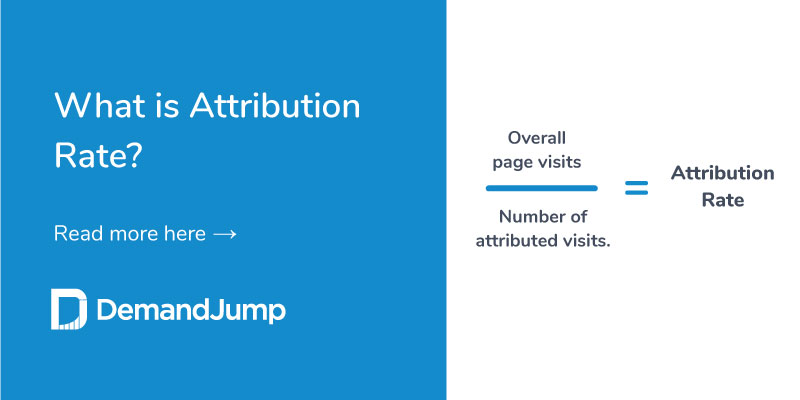What Is Attribution Rate?
February 12, 2021 •DJ Team

Attribution rate is the metric that measures the ratio between your overall page visits and the number of attributed visits. An attributed visit means you can understand where the visitor came from and give that source credit. Of course, that depends on how you are tracking marketing attribution. One way to control and even change your attribution rate is through different approaches to attribution modeling.
Currently, there are six attribution methods that can help you better understand the journey that brings customers to your website. The better and more specific your attribution modeling, the more clear and informative your attribution rate will be.
How Does Attribution Model Affect Attribution Rate?
Your attribution rate directly depends on how you are tracking user activity. For instance, if your attribution model isn’t tracking activity from social media, none of those visits can be included in the attribution rate. Depending on your strategy, this could mean you are missing out on a lot of metrics.
Choosing your attribution model should depend on your marketing goals. If your main goal is brand awareness, maybe you’re concerned with the first content an audience member is interested in. If your main goal is sales, then the last piece of content might be most interesting. Or, if you have a long sales cycle, maybe you want more granular information about the customer pathway.
As you change the kind of attribution model you are using, this is going to affect your attribution rate in turn. The right model will give you exactly the kind of information you need about the traffic to your target page, while the wrong model might make it seem like the strategy isn’t working at all. If your attribution rate is coming back zero, you might consider trying a different model from the list below.

Six Common Models of Marketing Attribution
- First Interaction: The first interaction is also known as the first touch attribution. What this means is that you will be able to see the channel that first sent the lead to your product, service or website. If you are interested in the individual attribution rates for a series of different web pages, this tracking might work for you.
- Last Interaction: With focus on the conversion itself, the last click attribution seems to pay not attention to the preceding details but, instead, focuses on the very last thing that created the sale, or the conversion. This tracking could be applied to determine the attribution rate of a page like a contact form or checkout page.
- Linear: The linear attribution model evenly disperses credit to every touchpoint of the consumer interaction. This kind of tracking could be useful for attribution rate if the sales funnel includes visits to lots of content on your website like blogs, webinars, or web pages.
- Time-Decay: This model also gives credit to every piece of content, but it gives the most credit to the most recent touch points. If you have a very short sales cycle, are changing campaigns often, or use lots of social media marketing, this might be the most valuable attribution model to support your attribution rate.
- Position-Based: This model focuses on three points in the customer journey--the first touchpoint, the last touchpoint, and the middle point. Approximately eighty percent of the credit is split between the first and last touchpoint, while the rest goes to the middle. If you want basic insight into the most successful pieces of content in your strategy this model might work best for you.
- Algorithmic Attribution: This model uses machine learning to assign the accurate amount of credit to every single piece of content your customer interacts with. If you have a very complex marketing funnel, this model is likely to provide the in-depth attribution rates you need to make informed decisions about content creation and promotion.
Improve Your Attribution Rate with DemandJump
Changing between attribution models doesn’t mean you have to spend more weeks collecting data. With a platform like DemandJump, you can view your current campaigns through the lens of all these models after a simple settings change. The information you learn from each perspective about your marketing can be used to fully get a picture of how traffic is getting to each piece of content in your strategy, and at what stage of the customer journey.
We’ll show you just how easy closing the loop between sales and marketing can be. Schedule time today!
Featured Articles
Categories
- Attribution Tracking (13)
- Channel Optimization (11)
- Consumer Insights (68)
- Content Marketing (251)
- Data Science (8)
- Digital Marketing (6)
- Digital Transformation (26)
- Enterprise (10)
- Lead Generation (14)
- Market Intelligence (8)
- Marketing Analytics (39)
- Marketing Attribution (57)
- Marketing Management (153)
- Marketing Operations (86)
- Organic Search (222)
- Paid Search (52)
- Pillar-Based Marketing (63)
- Programmatic Advertising (9)
- SaaS Content (14)
- SaaS Marketing (29)
- Search Marketing (111)
- SEO Keyword Research (28)
- SEO Pillar (18)
- SEO Strategy (46)
- SMB (5)
- Website Content (12)


